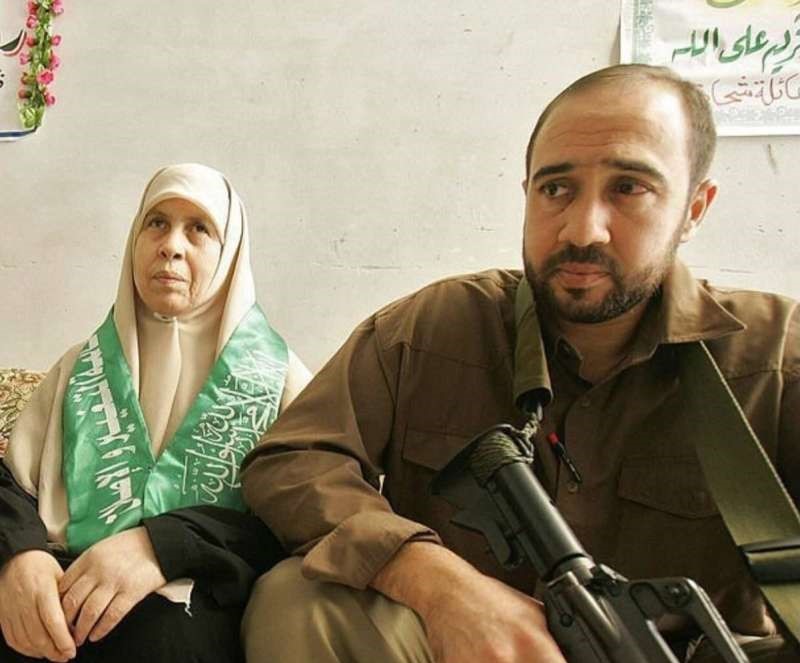GAZA – Scenes depicting the revenge of the
fighters of the Al-Qassam Brigades for Abu Hussein Farhat, the leader of the
Al-Shujaiya Battalion, circulated widely on Wednesday.
اضافة اعلان

A fighter appeared with an Israeli tank
engulfed in flames behind him, resulting from targeting it with anti-tank
shells, saying; "for the sake of Abu Hussein Farhat," whom the
occupation claimed was assassinated.
So Who is Abu Hussein Farhat?
Commander
of the Al-Shujaiya Battalion
Wissam Farhat, Abu Hussein, was a field
commander in the Izz ad-Din al-Qassam Brigades. He assumed the leadership of
the Shujaiya Battalion in 2010 and led it during the "Protective
Edge" battle waged by the Palestinian resistance against the Israeli
occupation in 2014.
During the battles in the Shujaiya
neighborhood in "Protective Edge," Farhat led the battalion, and
among his field achievements was burning and destroying Israeli armored
vehicles and causing casualties among Israeli soldiers.
Al-Aqsa
Flood
The Israeli occupation accused Abu Hussein
Farhat of involvement in planning the "Aqsa Flood" epic launched by
the Palestinian resistance on October 7. He is also accused of leading elite
forces towards Kibbutz Nahal Oz in the Gaza Strip and the adjacent site.
Abu Hussein Farhat was imprisoned for 10 years
in Israeli prisons, only to be released and return to Gaza, where he worked in
the production of rockets with the Islamic Resistance Movement, Hamas.
Son of
"Khansaa Palestine"
Abu Hussein Farhat is the son of Mariam
Mahisen, known as Umm Nidal, a leader in Hamas and a deputy in the Legislative
Council. Umm Nidal is known for her resilience and sacrifices, as three of her
sons were killed in the fight for the liberation of Palestine before her death
in 2013, earning her the titles "Khansaa Palestine" and "Mother
of Martyrs."
Born after a year of the Nakba to a simple
family in the Shujaiya neighborhood east of Gaza City, Umm Nidal excelled in
her studies. She married and gave birth to 6 sons and 4 daughters. In 2006, she
was nominated for membership in the Palestinian Legislative Council as part of
the "Change and Reform" bloc. After winning the elections, she
embarked on a journey of resistance and politics. Umm Nidal also held the
position of president of the "Bright Candle Society for the Care of
Martyrs' Children," and her home hosted the former Al-Qassam Brigades
commander, Imad Aql.
Brother
of fighters
Abu Hussein's brothers, Mohammad, Nidal, and
Rawad, were all killed, each leaving a significant impact on the resistance and
the development of military technology in the Al-Qassam Brigades.
In 2002, Mohammad Farhat (17 years old) left
his home in Shujaiya towards Rafah to infiltrate the "Atsmona"
settlement on the southern border of the Gaza Strip, killing 9 Israeli soldiers
and injuring 20 others.
Mohammad's older brother Nidal trained him,
and their mother prepared him for his operation. In a video will, she appeared
bidding him farewell and instructing him to "strike at the soldiers of the
occupation."
One year later, Nidal joined his brother,
becoming a field commander in the Al-Qassam Brigades and one of the pioneers in
manufacturing resistance rockets. He was also the mastermind behind the idea of
manufacturing drones.
Rawad, the third sacrifice from the Farhat
family, excelled in military manufacturing, becoming proficient in making
explosive devices, hand grenades, and propellants for Al-Qassam rockets. Rawad
faced repeated Israeli attacks in Shujaiya and Zaytoun in Gaza City until he
was assassinated by the occupation in 2005.
In the "Aqsa Flood" battle,
fighters, like Mohammad, infiltrated settlements, killed soldiers, and
Al-Qassam's rockets and drones, which Nidal contributed to, targeted Tel Aviv
and the occupied territories. Rawad's explosive devices, which he excelled in
making, burned Israeli soldiers and their tanks.
This story was originally published in Al-Ghad Newspaper
in Arabic
Read more Region and World
Jordan News



